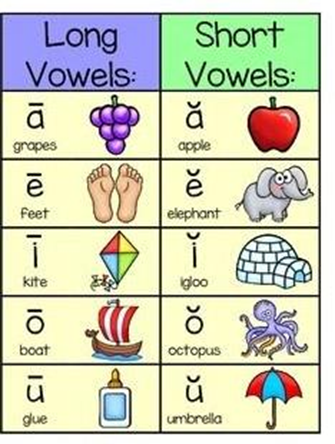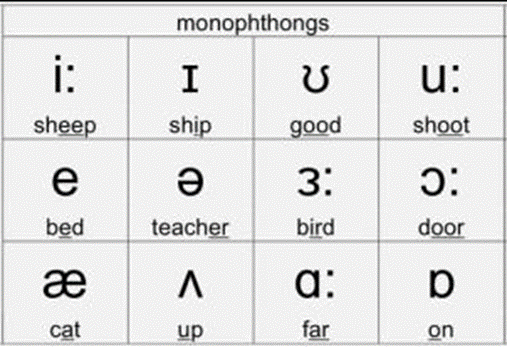Phonetics
Objective
At the end of this session, students will be able to:
• Identify the speech sounds of a language
• Comprehend the vowel sounds
• Recognize the phonetic symbols
• Apply phonetic sounds for correct pronunciation
• Identify the organs of speech
• Identify consonant sounds
• Practice consonant sounds
• Comprehend the articulation of sounds
• Demonstrate correct pronunciation using appropriate consonant and vowel sounds
Phonetics-Definition
Speech sound refers to the set of distinctive sound in any
given language.
e.g. “o”
Phonetics is a study of speech sound. It deals with
pronunciation.
In English, 26 letters produces 44 sounds which can be differentiated
as:
• Vowels
• Consonants
Importance of Phonetics
• Understand the speech of sound
• Correct pronunciation of the words
• Clarity in pronunciation
Vowels Sounds –Introduction
Vowel is a sound produced when there is no obstruction to
the airstream anywhere in the phonatory organs.
There are twenty vowel sounds.
Vowels are divided into two categories based on the sound
production.
• Single Vowel Sounds or Monophthongs
• Double Vowel Sounds or Diphthongs
Monophthongs
A vowel that has a single perceived auditory quality.
Monophthong shows that a vowel is spoken with exactly one tone and one mouth position. For example “teeth”, the sound of the “ee”, nothing changes for that sound.
|
Short vowels |
Word examples |
Long Vowels |
Word examples |
|
I |
Thin, sit, rich, kick, hit. |
i: |
Need, beat, team. |
|
e |
Went, intend, send, letter. |
ɜ: |
Third, turn, worse, world, word. |
|
æ |
Cat, hand, nap, flat, have. |
a: |
Glass, half, car, arch, hard. |
|
ʌ |
Fun, love, money, one, London, come. |
ɔ: |
Talk, law, bored, yawn, jaw. |
|
ʊ |
Put, look, should, cook, book, look. |
u: |
Few, boot, lose, gloomy, fruit, chew. |
|
ɒ |
Rob, top, watch, squat, sausage. |
|
|
|
ə |
Alive, again, mother. |
|
|
Diphthongs
Single sound produced with pairing of two vowels in a
specific sequence.
Organs of Speech
Phoneme and Syllable
A phoneme (speech sound) is the smallest unit of sound in a word. e.g. – ‘a’ , ‘ai’ , ‘p’
À syllable is a word or part of a word that contains one
vowel sound. e.g. – Car, bas/ket, croc/o/dile
Consonant Sounds: Introduction
Consonants are non-vowel sounds.
There are 24 consonant sounds in English:
• 6 plosives: /p b t d k g/
• 9 fricatives: /f v θ ð s z ʃ ʒ h/
• 2 affricates: /tʃ dʒ/
• 3 nasals: /m n ŋ/
• 1 lateral-approximant: /l/
• 3 approximants: /w j r/
Stops or Plosives
Stops or plosives are consonant sounds that are formed by completely
stopping airflow
p pen, copy, happen
b back, baby, job
t tea, tight, button
d day, ladder, odd
k key, clock, school
g get, giggle, ghost
Fricatives
Fricatives are consonants produced by forcing air through a narrow channel made by placing two articulators close together.
Articulators: Any of the vocal organs above the larynx,
including the tongue, lips, teeth, and hard palate
f fat, coffee, rough, photo
v view, heavy, move
θ thing, author, path
ð this, other, smooth
s soon, cease, sister
z zero, music, roses, buzz
ʃ ship, sure, national
ʒ pleasure, vision
h hot, whole, ahead
Affricates
A phoneme which combines a plosive with an immediately following fricative or spirant sharing the same place of articulation
tʃ church, match, nature
dʒ judge, age, soldier
Nasals
Nasal sounds are produced by sending a stream of air through the nose.”
m more, hammer, sum
n nice, know, funny, sun
ŋ ring, anger, thanks, sung
Lateral-Approximant
A lateral is an l-like consonant in which the airstream proceeds along the sides of the tongue, but it is blocked by the tongue from going through the middle of the mouth.
l light, valley, feel
Approximants
An approximant consonant is a consonant that sounds in some ways like a vowel.
r right, wrong, sorry, arrange
j yet, use, beauty, few
w wet, one, when, queen
Ways to Articulate Effectively
• Listen to yourself speak
• Monitor your speed
• Eliminate filler words
• Focus on the final sound
• Study other speakers
• Speak with confidence
• Think before you speak
• Address your weaknesses
To Sound More Articulate:
Make a special effort to pronounce the final sound in a word
and use its energy to carry over to the following word.
Summary
• Definition-Phonetics is the study of speech sound
• Importance of phonetics
• Phonetics-Vowel and Consonants
– Monophthongs-Symbols with examples
– Diphthongs-Symbols with examples
• There are 24 consonant sounds in most English accents, conveyed by 21 letters of the regular English alphabet (sometimes in combination, e.g., ch and th)
• Manner of articulation like plosives, nasal, affricative
and fricatives
• Ways to effective articulation
Disclaimer
All data and content provided in this presentation are taken
from the reference books, internet – websites and links, for informational purposes only.
Also, Visit:
B. Pharma Notes | B. Pharma Notes | Study material Bachelor of Pharmacy pdf











